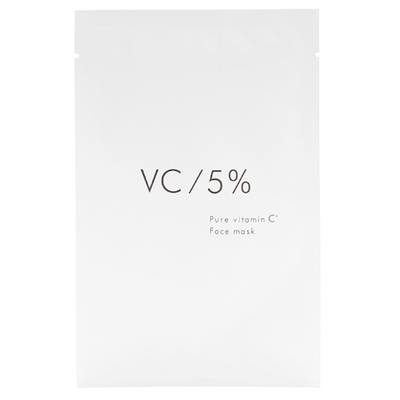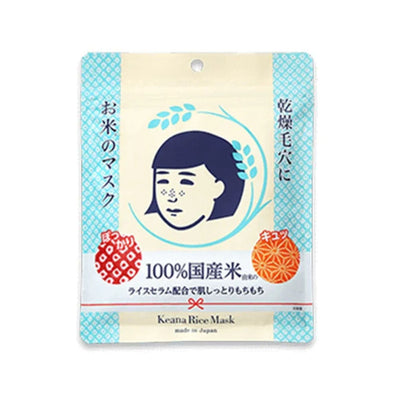Thanksgiving is a big holiday for many folks in both the United States and Canada, with many versions of the holiday of gratitude popping up around the world. But what about Japan? Well, it did eventually make its way here, but not in the way you might think! Today’s MiauMall deep dive is all about Thanksgiving in Japan!
Read on to learn more about the holiday’s unique history, how Japan celebrates the holiday and some fun things you can do in Japan to celebrate!
Does Japan Celebrate Thanksgiving?

The celebration of Thanksgiving in Japan all started with the crop that became a staple of Japanese food--rice! Image via Freepik
Yes, kind of! Japan celebrates a version of Thanksgiving now that is known most commonly as Labor Thanksgiving Day. However, unlike the customs affiliated with Thanksgiving in places like America or Canada, this national holiday is all about the appreciation of the workers who keep Japan running and workers’ rights!
This holiday is usually celebrated on November 23, unless it falls on a Sunday, where it is moved to Monday November 24.
And while some folks may try to group this holiday in with Valentine’s Day and Christmas as Western holidays that came to Japan, which isn’t entirely false, it’s mostly wrong. Labor Thanksgiving has its own unique history in Japan that dates back around 2000 years!
The History of Labor Thanksgiving Day

This doesn't look like your typical Western Thanksgiving, right? That's because it's a long-running tradition dating back well over 2000 years! Image via Wikimedia Commons
Niiname-sai
Labor Thanksgiving has roots in Japan as a harvest ritual performed sometime between 660 and 585 BC under Emperor Jimmu. This ritual evolved as time went on until it became the basic form of Niiname-sai when it was fully established under Emperor Tenmu (667-686 AD).
Niiname-sai was first a ceremony and celebration of that year’s hard work and harvest, where the Emperor would dedicate the harvest to the kami (gods or spirits) and taste the first rice of said harvest. In fact, this event is very specifically tied to rice and sake (Japanese rice wine) as new rice expressed thanks to the gods for the harvest and prayer for prosperity and security.
The festival was originally on the second Day of the Rabbit (the 23rd or 24th) in the lunar calendar’s 11th month. And with the switch to the Gregorian calendar in 1873 during the Meiji Restoration, the holiday was set to November 23.
So, how did Niiname-sai become Labor Thanksgiving?
From Niiname-sai to Thanksgiving to Labor Thanksgiving

So how did we go from rice-centered ceremonies to kiddos giving firemen presents? Image via Instagram
Let’s jump to 1948. At the time, Japan was occupied by the US after World War II. At this time, a new government was established along with a new Constitution, including a national holiday plan.
During the establishing of the new holiday plan, the US leadership tried to remove Shinto-based holidays in favor of more secular ones. Possibly as a means of meeting Japan halfway, they recommended Thanksgiving as a holiday to replace Niiname-sai and Japan initially accepted the idea.
However, shortly afterwards, Japan’s version of the House of Representatives didn’t really understand what they’re supposed to be giving thanks to as the idea of Thanksgiving was too vague. (Honestly, that response is not surprising for Japan.)
As a result, thanks towards labor, as in workers, military, police officers and more, was chosen and officially decided as their target of thanks for the holiday. And while it’s technically not a Shinto holiday anymore, Niiname-sai is still practiced by the Emperor, at some large Shinto shrines, local areas and through events on the same day.

Local shrines may even have their own unique ceremonies shaped by local history! Image via Instagram
How Does Japan Celebrate Thanksgiving
So, now that we’ve arrived at Labor Thanksgiving, how do people actually celebrate in terms of giving thanks? It’s a much more chill, quiet holiday compared to the very large Thanksgiving in the US. But depending on who you are and where you live, you have several options.
Students
Again, this holiday is essentially all about thanks to essential workers, including hospital staff, firefighters and the Japan Self-Defense Force. If you’re a student here in Japan, mainly in elementary school, you might make cards and gifts for these workers. These gifts may be sent by the school or given face-to-face as part of a field trip!
The Imperial Family

This photo from all the way back in 1990 is a glimpse into what the ceremony may look like for the Emperor, in this case, Emperor Akihito. Image via Wikimedia Commons
If you were the current Emperor of Japan, you’d still be doing the traditional ceremony privately every year with only the attendance of a couple of servants and Shinto priests. The ceremony actually takes place in two phases, one from 6 p.m. to 8 p.m. and 11 p.m. to 1 a.m.
These ceremonies often involve offering new rice to the gods and kami in the form of cooked rice, rice porridge and sake. Fun fact: Sake is commonly used in rituals and has a very divine significance. *That’s why if you check out our Thanksgiving sale, you’ll find rice and sake lees products, including snacks and skincare.

Rice is a huge part of Japan's culture, going beyond rice and sake and into areas like skincare with nourishing, traditional ingredients like rice water, rice bran and fermented rice. Image via Instagram
Fun Fact #2: The past two Emperors have both made adjustments to the ceremonies due to their advanced ages. Emperor Hirohito altogether stopped at the age of 70 while Emperor Akihito reduced his participation between the ages of 75 to 80. The current Emperor, Emperor Naruhito, is relatively younger, so he is performing the duties as they have been traditionally.
Local Shinto Celebrations
Don’t worry if you’re not an emperor or a student. You may still be able to observe the Niiname-sai by going to some large Shinto shrines! These ceremonies are open to the public, and many Shinto believers gather to enjoy the festival. However, don’t expect a huge, lively affair for the ritual.
In fact, it tends to have a serious, spiritual atmosphere that is still fascinating from a cultural perspective. The official rites actually happen at the same time as the Emperor’s rites. Ise Grand Shrine, Izumo Shrine and Sumiyoshi-Taisha (located right in Osaka) are all places that perform this ritual.

Some places, like Mie, are exceptions to the quiet ritual as they hold a large Niiname-sai festival with plenty of Japanese sake flowing. Image via Instagram
How You Can Celebrate Thanksgiving in Japan
If a solemn ceremony isn’t your thing and you’re looking for some more exciting opportunities, there is still plenty to do on the day! While most companies give people the day off, stores and restaurants are still open, so many just go out to enjoy a good time. Let’s explore some other options!
Thanksgiving Dinners

Making a Thanksgiving plate on your own can be tough with how hard ingredients can be to find here in Japan, but shops like Smokehouse have your back! Image via Instagram
While Japan doesn’t have the same idea of Thanksgiving, more international restaurants, including hotel restaurants, may have Thanksgiving plates or buffets for the day! Some of these places will even have turkey, despite turkey being nearly impossible to find in Japan.
Tokyo has plenty of options including fancy Western hotels like the Grand Hyatt Tokyo and international restaurants like Soul Food House, Smokehouse and more. Meanwhile, Osaka is mostly just the hotels, like the Hilton’s Thanksgiving lunch and dinner buffets. (Some of these options may cost you though.)
Enjoy Some Fireworks

Who knew that you could see a huge fireworks festival in the late fall? Image via Instagram
The Nagano Ebisu Fireworks Festival is a huge fireworks event that is doing its 119th iteration this year. It happens every year on Labor Thanksgiving in Japan, shooting over 10,000 fireworks into the air over the show’s 90 minutes.
It also has plenty of yatai that sell amazing Japanese festival food. This event is also unique as most fireworks festivals happen in the summer and very rarely in the late fall!
Get Organized and Active
While companies and organizations thank their workers, this is also a time when workers’ rights groups come together, acknowledge what they’ve accomplished, and what they can do moving forward. If you’re working in Japan, it may be a good opportunity to organize, strategize and make moves with your fellow workers!

And maybe enjoy some sake, a drink with plenty of spiritual context in Shinto! That's why you often see donated barrels of sake at shrines like Meiji-Jingu. Image via Unsplash
Labor Thanksgiving Day is its own unique holiday that is only related to Western Thanksgiving by name and a general idea of thankfulness. However, its base as both a worker’s holiday and a Shinto ceremony gives it a unique Japanese twist!
What will we be doing this Labor Thanksgiving? Well, we’ll be enjoying the day off and doing our own versions of Thanksgiving with friends and family!
By the way, we’re running an amazing Thanksgiving-themed sale full of Japan’s fall flavors! Click below to check out our Miaus-giving Sale!











